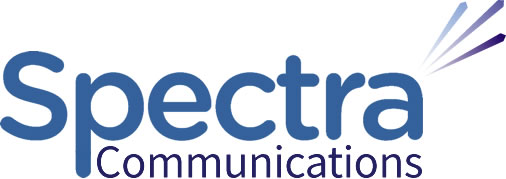
Disappointed that your website, social media, brochure, or ads aren’t bringing in those “ideal clients” and the business you want – but still draining your money and/or time?
It can be frustrating… like being stuck on an island wanting to reach your target audience on the mainland. Here’s practical advice on how to bridge your communication gap through ‘tech-savvy marketing’ to get more clients with lower acquisition cost.
Let’s have a look at what you might be experiencing…
“We’ve got something of real value, and care about our clients, but we’re just not getting the business we deserve”
Sound familiar? You’ve worked hard to build your company. You’ve put a lot into developing your products and services. With continual improvement, you think they’re better than average, however you’re not getting the recognition and rewards. Sometimes the self-doubt creeps in.
You may get glimpses of the business potential, but you can’t quite see how to get there from your current level. Word-of-mouth referrals are great, but they’re not enough. You’re not just looking for more leads – you’d like the right kind.
Do you know who your “ideal” clients are – the most profitable, loyal, and enjoyable types who give referrals, and share your values? A handful of these is worth more than a bucket-load of low-value, big-hassle, clients.
“Our marketing isn’t getting the results we’d like”
Your advertising and marketing is costing you, but not pulling in much business. The low ROI is disappointing and frustrating. You want to be smart with your resources, so you’re looking for more bang for your buck.
You’re open-minded enough to try the latest tactics like social media and digital marketing, but they’re not living up to the ‘buzz’ you were seduced with. It can be overwhelming to try to keep up with all this, and stay on top of everyday business. You’d prefer to ‘stick with your knitting’.
Blowing your trumpet harder or pushing your products more into prospects’ faces may be tempting, but it won’t cut it. A hard sell puts people off, as you’ll probably know from being on the receiving end! It kills trust because they only seem to care about getting your money; not listening to your needs and helping you reach your goals.
People want to be communicated with, not sold to.
It’s like when you need urgent help for a clogged sewer drain, and you look in the Yellow Pages or Google for a plumber. All you can see in big letters is “Bill’s Plumbing Services” or “Ted’s Plumbing Services” but then finally you see “Clogged drains – 2 hour response or it’s free”. Finally someone is meeting you where you’re at, so now you’re actually interested in their name.
It’s also like election campaigns where you see a whole lot of signs that seem to say “pick me pick me, I want the status and power”. It doesn’t work. You want to know what they’re going to do for the city, with credible evidence that they can actually deliver some value.
“Can the market see our full value?”

In the 1800s, the Schlitz beer company was in trouble, lagging behind at 8th place in the U.S. market. They employed Claude Hopkins, a famous pioneering copywriter who was a bit out-of-the-box, to write some ads for them. He asked for a tour of the brewery and was amazed at what he discovered – things that were just everyday routine for the company…
– 4,000 foot deep artesian wells providing the purest water available; a mother yeast cell that came out of 1,200 experiments to yield the robust flavor; filtered air in production rooms to cool the beer without impurities getting in; pumps and pipes cleaned twice daily; and every bottle sterilized four times before filling with beer.
It took an objective outsider to appreciate all these ‘technicalities’. Wow! When he put all this into his ads (like the one on the right), the company leapt from 8th in the market to number one in only 6 months. But the really amazing thing is… all the other breweries were doing much the same thing! They simply weren’t communicating it to the market, but shouted “purity, purity” without actually proving it.
“Do we actually know what our clients value most?”
Your clients will see your business quite differently to you. The things that keep them coming back to you might be ‘right under your nose’, while the features you think are most exciting may not be such a big deal to them. If you can get them talking freely and openly at a deeper level, you’ll find out, but that’s not so easy. However, an objective outsider can achieve this by effective interviewing.

I helped one company, that solves noise problems for airconditioner installers, receive 20 times more enquiries off their website. Here’s a sample from the case study…
“I interviewed a few of their valued clients from different target market sectors to find out about their experiences, what they valued most about NCS, and the benefits that kept them coming back.
What transpired was the great end-to-end service they provide, taking a ‘global’ view to provide resourceful, cost-efficient, solutions backed with helpful advice – not just products.
NCS had clearly learned a lot of lessons over the years and developed expertise that they took for granted – assuming it was obvious to others, but wasn’t.”
These stories were a powerful proof of the value NCS offered. When written up in the clients’ own words, they were like word-of-mouth referrals – the ultimate marketing fodder. Instead of just reaching a few people by personal talk, they captured a wide audience of website visitors – building a lot of trust and interest in NCS.
When I re-wrote the website to touch the hot issues, supported by testimonials, along with search optimization and a fresh design (see above), there was a sudden boom in quality leads.
Your potential success may not even be about your product technicalities, but the value-add service you provide. I asked a customer of one client how their products stacked up against competitors in the market, and he just said “they do the job”. Huh… amazing… their loyalty was actually all about the helpful advice and solutions to problems.
“Have we got the right people doing our marketing?”
It’s all about ‘matching what you’ve got to what they need’ – connecting your greatest strengths to the market’s greatest needs. It’s like hitting the ball in the ‘sweet spot’ of your tennis racquet – maximum ball speed with minimal jarring or effort. But who can best help you achieve this?
If you employ a non-technical marketing agency…
They probably won’t really understand your business, with little interest in the technicalities, and will struggle to relate to your technical staff. (Even a technical marketing company confided in me that they have trouble fathoming some clients’ businesses.)
It’s unlikely they’ll capture all the business benefits of your technology and express them in a believable way to your target audience. Prospects will see through it, and your company could lose credibility. You really need safe hands for your brand and reputation.
The content could sound quite ‘salesy’ – pushy – ‘ra-ra-ra’. There may even be technical mistakes if you don’t carefully check everything. Getting it right can require arduous review cycles, meaning slow collateral development and delayed rollouts.
Marketing agencies can be very expensive too.
If you use in-house staff (DIY)…
You may believe you’re saving money. You might even think “lets just get our products out there and they’ll come to us”.
Your engineering or technical staff are probably too busy and pressured on ‘productive’ work to get around to it. They’ll be reluctant or grudging, so collateral development will usually get put off.
The website or brochure content will likely be too complicated and hard to understand – written from the company’s point of view, not the prospect’s. It won’t address your prospects’ world and hot issues, and the marketing message will get buried.
If you use sales staff, they‘ll know how to relate to your prospects all right, but they have their demanding quotas to meet and may not be good writers.
If you employ a technical writer…
They write to explain, not sell. That’s great for user manuals – showing how the product works and how to operate it – but it’s not going to attract new clients.
Hitting the ‘sweet spot’ with a tech-savvy copywriter
The above options mean trying to reach your target audience with only marketing or technical knowledge – getting limited results, but tech-savvy marketing unleashes full sales potential.
Help is out there, so you can stick to running your core business and have the marketing content taken care of. If you can find a copywriter who understands BOTH technicalities AND marketing – ideally an ex-engineer – you’ve got it made…
- As an objective outsider, they can talk to your clients and get to the heart of their needs, motivations, and the full value they get in your company – then put that across in a unique way to stand you out of the crowd
- They will understand your high-tech solutions and ‘speak engineer’ – plus translate complex technologies into clear business benefits that are compelling to non-technical management and decision-makers
- The job gets done on-time and it’s all easy to manage – the writer takes care of everything seamlessly with minimal effort and time on your part
- You finally get the recognition and business you deserve, as trust and respect is won
There aren’t many people like this around. You may have to look at their About Us page to see that they’ve actually done engineering work. You’ll find a small handful of them, including Spectra Technical Copywriting.
Keys to Fix Your Marketing Message to Get the Business You Deserve
To sum up, here’s how to grow your business by gaining recognition, trust, and respect in the market:
- Identify a few of your ideal clients – the most profitable and loyal types who give referrals and are less hassle;
- Get a tech-savvy copywriter on the job – who understands both technicalities and marketing – to help you achieve the rest…
- Interview some of your ideal clients to get their stories – experiences, big issues, and what they value most about your company;
- Identify the outstanding ‘value-adds’ – in your products, or just your service (even if you’ve got ‘average’ products);
- Write marketing content that addresses the big client issues and conveys your full value to the market (supported by case studies written in the clients’ own words) – and put this on your website (which is the hub of your marketing) and brochures;
- Extract some highlight snippets from the above and use them as ‘hooks’ in your ads and social media to point back to your website.
That’s it in a nutshell.
Feel free to share this article with those who could benefit from it – who would appreciate you doing them the favor…
